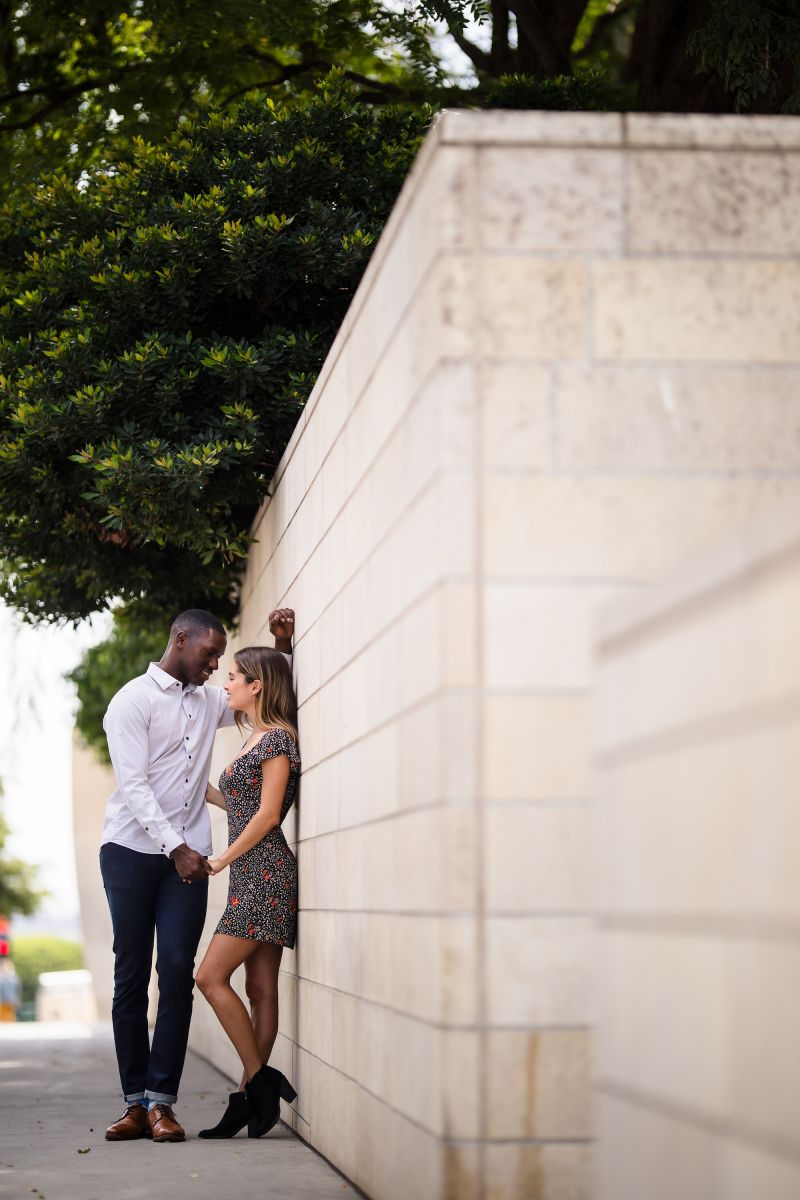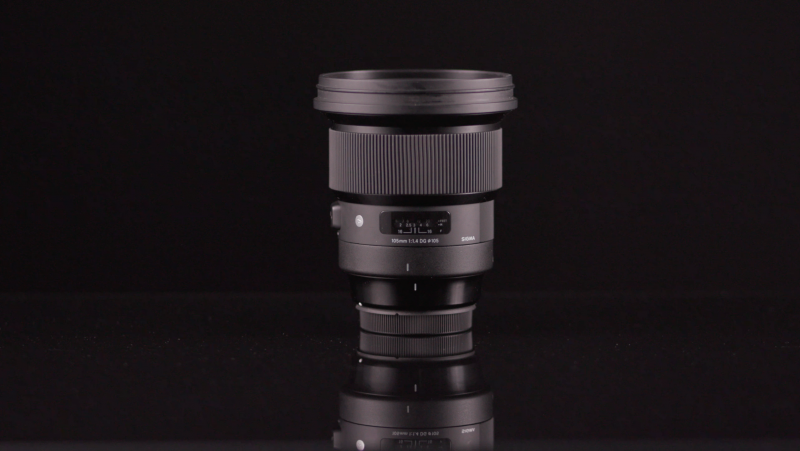
The Sigma Art 105mm f/1.4 is by no means new to the market so in this review, I’m also going to teach you how to best utilize this lens and focal length.
Cons – Consider These Before Buying
We’re doing things a little different from our typical reviews and starting with the cons first. Upon first glance, the Sigma Art 105mm has some drawbacks, let’s discuss each one:
1. High Price Point
When it comes to the price point, the Sigma Art 105mm is not for the faint of heart. It’s a high-end specialty lens and wouldn’t be the first place I’d look for someone just looking to start their photography kit. At $1,600, this lens isn’t a steal nor is it a bargain. Typically, in that price range, you can purchase a zoom lens that gives you the variability, but with this beast, you get one focal length at a wide aperture. With that said, there is nothing else at this price point that can do what this lens does when it comes to portraiture. So while it’s expensive, there is value in what it offers.
2. Wide & Heavy
Matching its hefty price point is its hefty weight. Coming in at 3.6 lbs the lens matches the weight of my Canon 5D Mark IV paired with a Sigma Art 50mm. If you are worried about lens storage, this lens will take up quite a bit of space in your kit. For those that are on the go shooters, the weight of your gear is a huge factor in how accessible and efficient you can be so the weight of the Sigma Art 105mm could be a deterrent.
If you can get past the weight and price, then what you have left is one of the best portrait lenses I’ve ever used. Although most portrait photographers reach for an 85mm focal length, I am going to make the argument that this lens trumps them all by going through some of its characteristics that sets it apart from other focal lengths.
Pros – What I Love About This Lens & How To Utilize It
While I have vast experience using the 85mm focal length on wedding and portrait shoots, there are certain attributes that the Sigma Art 105mm brings to the table that are hard to replicate with my other lenses, especially with an f/1.4 aperture combined with a longer focal length. Here are some of my favorite aspects of this lens and how I best utilize it on my shoots:
1. Focal Length – 20mm Makes A Difference

Size truly does matter, especially when it comes to lens choice. My go-to portrait lens has always been an 85mm focal length (and I’ve used various types ranging from f/1.2 – f/1.8) because of its ability to compress the subject against the background without having to be too far from the subject. But after reviewing my catalog of images, I’ve found that most of my images fall under the 70mm-100mm range and the 85mm seems redundant after a certain point. Using my 24-70mm at 70mm gives me a similar look, and using my 70-200mm is even more identical – I just wish I had something a little more unique. That’s where the 105mm comes in as it gives me a focal length that’s just a bit more unique than the other lenses already in my bag.
2. Layering & Compositional Control

One of my favorite compositional components is layering subjects and shooting through things to create depth and interest from the foreground to subject to background. We went to Downtown LA recently to film the Part II of Incredible Engagement Photography. You’ll see in the video that the pathway we were shooting in was less than ideal for a wide focal length so I had to get a little creative to make it work.
What I did to use the compression characteristics of this lens to their best ability was to place the male subject closer to the lens and look towards the shadow side while the female subject was placed a couple of feet back, in a natural highlight facing towards the light. I stopped down to f/4.0 to ensure that my male subject wouldn’t completely dissolve into a blurry foreground figure. For shots that are layered like this, you’ll need to stop down to get more detail, as much as it may pain you to not shoot everything at f/1.4.
3. Get It Looking Right By Getting Tight
As portrait photographers, we are constantly looking for beautiful backdrops for our subjects that will yield that much-desired bokeh aesthetic or blurred background. Without a doubt, the 105mm focal length is the ideal choice for blocking out unwanted objects within your frame. In the scene from the photo above, it appears as though we are in a field of lavender flowers but if you swipe to the right you’ll see that it’s just a bunch of weeds next to a parking lot and busy street in Downtown LA – gotcha! We can get in tight without worrying about any distortion of the facial features, we can stand back and get beautiful depth as we shoot through objects
4. Perspective Compression
Lens/perspective compression is essentially the phenomenon of background elements appearing larger than they are – hence the scene becomes “distorted” since those background elements appear closer and larger than they are in real life. You can stand far back, and use that perspective compression to pull forward far away details like in this shot of our couple crossing the crosswalk. This is by far the most unique and essential attribute of the Sigma Art 105mm and what I really wanted to focus on in this review. There are so many opportunities to utilize this characteristic while shooting and having this in my tool kit really got me thinking about what I could create with it.
5. Buttery Smooth Bokeh on the Sigma 105

Let’s be honest, bokeh is overrated and overused as a compositional tool (which is a whole other topic for later discussion) but I wanted to focus on other attributes of this lens in this review rather than just how beautiful the bokeh is. I love bokeh just as much as the next photographer, and I’ve found the depth aesthetic to render beautifully on this lens, just as good as an 85mm f/1.2 or f/1.4, if not better. At 1.4, the Sigma Art 105mm is tack sharp on its focal point which makes it so incredibly easy to separate your subjects from busy backgrounds.
What To Expect From The Sigma Art 105mm

Before purchasing this lens or adding it to your kit, understand what it’s not. It wouldn’t say that this is a lens meant for journalism, sure you can do it, but you’ll easily run into the issues and frustration over the fact that the Sigma 105mm Art doesn’t have a variable zoom to control composition. Also, when shooting wide open, while it’s great for low light, it’s not going to be the quickest in finding focus.
If you are shooting sports, it’s going to be a long focal length, but not quite long enough. Most sports photographers will want 200mm prime or more. This particular Sigma Art 105mm f/1.4 review doesn’t quite cover various niches of photography since we focused mainly on portrait sessions. This preference might vary depending on which higher resolution camera body you are shooting with since you can just shoot wider and then crop in as desired while retaining adequate resolution, but that isn’t the ideal scenario.
I love Sigma’s Art lenses, but I find that they do sometimes require a bit more AF calibration than factory lenses. I like to get around this feature by utilizing live view or pixel-based focusing systems that help me bypass all of these issues since they hunt for the sharpest pixel, rather than any other methodology. Most any modern DSLR will have a live view or pixel-based focusing systems, so use them, they are your friend!
Sigma 105 1.4 Review Conclusion
In short, you are buying this lens as primarily a portrait lens, and at that, I prefer it to my 85mm primes. In fact, I think it’s one of the best portrait lenses I’ve ever used. Hope you enjoyed, if you have questions, please let us know. You can purchase the Sigma Art 105mm f/1.4 for Canon, Nikon, and Sony. Also, be sure to join us on Facebook in our Master Engagement/Wedding Photography as well as Master Lighting with SLR Lounge.
8.2 Score
Pros
- Great Focal Length
- Buttery Bokeh
- Great Perspective Compression
- Tack Sharp Image Quality
- Weather Resistant
Cons
- High Price Point
- Heavy Weight
- Large Build
Final Verdict
The Sigma Art 105mm f/1.4 brings attributes to my images that I can't quite replicate with my other lenses, and for that reason, it has become my favorite portrait lens.















Get Connected!